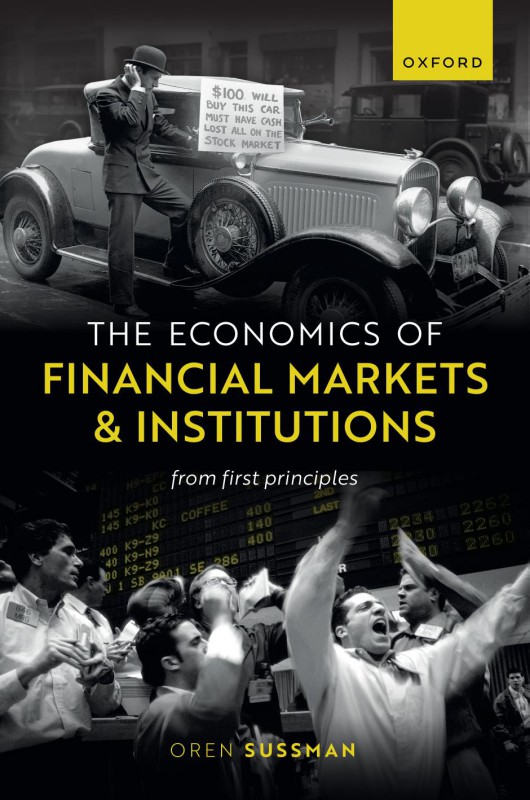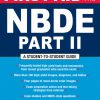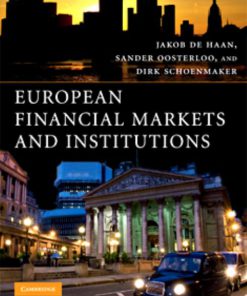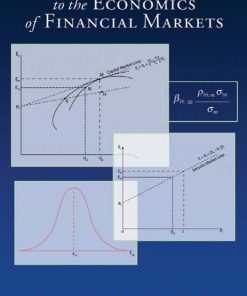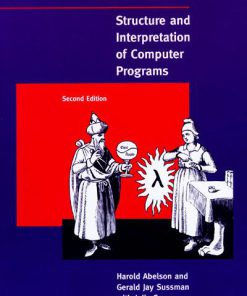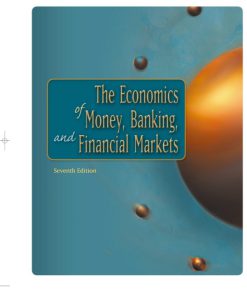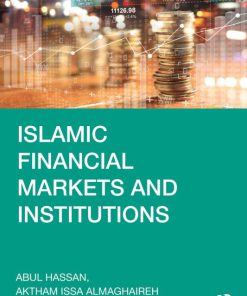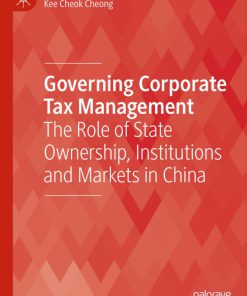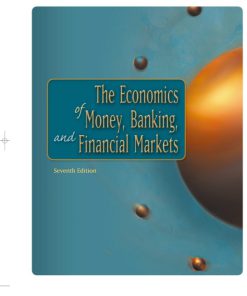The Economics of Financial Markets and Institutions 1st Edition by Oren Sussman ISBN 9780192696793 0192696793
$50.00 Original price was: $50.00.$25.00Current price is: $25.00.
Authors:Oren Sussman; , Series:Management [832] , Author sort:Sussman;, Oren , Languages:Languages:eng , Published:Published:Jul 2023 , Publisher:Oxford University Press
The Economics of Financial Markets and Institutions 1st Edition by Oren Sussman – Ebook PDF Instant Download/Delivery. 9780192696793 ,0192696793
Full download The Economics of Financial Markets and Institutions 1st Edition after payment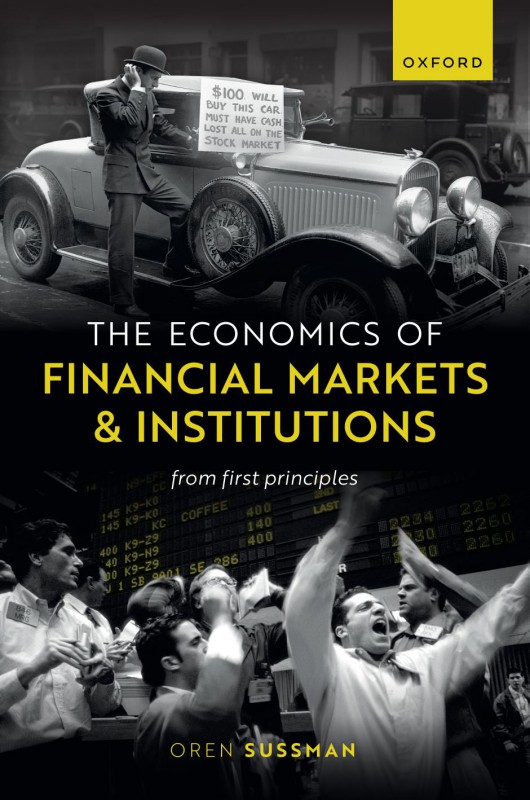
Product details:
ISBN 10: 0192696793
ISBN 13: 9780192696793
Author: Oren Sussman
The Economics of Financial Markets and Institutions 1st Edition Table of contents:
1. Making (Rational) Decisions
1.1 Introduction
1.2 From Sentiment to Quantified Subjective Valuation
1.3 The Subjective Value of Time
1.3.1 Arbitrage
1.3.1.1 Discounting
1.3.2 The Net-Present-Value (NPV) Formula
1.4 An Application: Rational Drug Addiction
1.4.1 The Decision Tree of a Potential Drug Addict
1.4.2 Rational Decisions
1.4.3 Practical Implications
1.4.4 Backward Induction
1.5 Opportunity Costs
1.6 Revealed Preferences
1.6.1 Lending and Borrowing Decisions
1.6.2 The Revealed-Preference Principle
1.7 Decreasing Unit Subjective Valuation (DUSV)
1.8 A Note on the Indexing of Commodities
1.9 Attitudes towards Risk
1.9.1 The Allais Paradox
1.9.2 The Subjective Valuation of Risk Attitudes
1.9.3 Behavioural Finance
1.10 Positive Economics
1.11 Correlation and Causality
1.12 Conclusion
References
2. Cutting Deals (the Coase Theorem)
2.1 Introduction
2.2 Economic Efficiency
2.3 Rubinstein’s Alternating Offers Bargaining Game
2.3.1 Building Up Intuition: A Simpler Game
2.3.2 Non-credible threats
2.4 Equilibrium in the Alternating-Offers Game
2.4.1 Equilibrium for the T = 1 Game
2.4.2 Equilibrium for the T = 2 Game
2.4.3 Equilibrium for the T = 1 Game
2.5 Taking a Shortcut: Nash Bargaining
2.6 The Coase Theorem
2.6.1 Frictions: A Simple Example
2.6.2 Frictions: Preliminary Discussion
2.6.3 Ex-Post versus Ex-Ante Economic Efficiency
2.7 A Note on Equilibria in Games
2.8 Application: Insolvency Law
2.8.1 Financial and Economic Distress
2.8.2 Debt Overhang
2.8.3 Debt Forgiveness
2.8.3.1 Debt-for-Equity Swaps
2.9 The Limits of Freedom of Contracting
2.9.1 Third Parties
2.9.2 Private Benefits and Liquidity
2.9.3 Activist Courts and the Availability of Credit
2.9.4 Uncoordinated Creditors: Creditors Run
2.10 Conclusion
References
3. Property Rights
3.1 Introduction
3.2 The Nature of the Firm
3.2.1 An Outline of a Theory
3.2.2 Relationships: Weak and Strong
3.3 Technological Complementarities and Synergies
3.4 Joint Ownership and Synergies
3.4.1 Contract and Property
3.4.2 Buy Outs
3.4.3 A Reconsideration of the GM–FB Case
3.4.4 An Empirical Test of the Theory
3.5 Property Rights and Secured Debt
3.5.1 Contracts and Capital Structure
3.5.2 A Theory of Security Interests
3.6 Trade in a Lawless Environment: Reputation
3.7 Conclusion
References
4. Competitive Markets
4.1 Introduction
4.2 Perfect Competition
4.2.1 A Note on Profit Maximization
4.3 Supply and Demand Curves
4.3.1 ‘Shifts’ on and of Supply and Demand Curve
4.3.2 Diversion: Elasticity of Demand
4.4 Market Equilibrium
4.4.1 Stability of Equilibrium
4.4.2 Welfare Theorems
4.4.3 Tax Distortions and Lump-sum Taxes
4.4.4 Endogenous and Exogenous Variables
4.5 ‘Free Trade’
4.5.1 Trade Liberalization
4.5.2 A note on Coase, Pareto, Spontaneous Order and the State
4.5.3 David Ricardo’s Comparative Advantage Theory
4.6 Fitting Data: Estimating Supply and Demand Curves
4.7 Applications
4.7.1 The Effect of Import Quotas on the US Economy
4.7.2 The Effect of Climate Change on Farmers Income
4.7.3 Environments with Both Strategic and Market Interactions: ‘Fire Sales’
4.8 Conclusion
References
5. The Market for Risk
5.1 Introduction
5.2 The Description of Uncertainty
5.3 The Market for Risk
5.3.1 Linear Demand Functions
5.3.2 Risk Aversion and the Demand Function
5.4 Insurance and Investment
5.5 Market Equilibrium and the Motives for Trade
5.5.1 Trade Driven by Differences in Exposure
5.5.2 Trade Driven by Different Attitudes towards Risk
5.5.3 Trade Driven by Different Beliefs
5.6 Normative Analysis
5.7 Empirical Tests of Risk Sharing
5.8 Arbitrage, Arrow-Debreu Securities, and Complex Securities
5.9 Some Classic Results
5.9.1 The Modigliani–Miller Theorem
5.9.2 Derivative Pricing
5.9.3 The Capital Asset Pricing Model (CAPM)
5.9.3.1 CAPM and Idiosyncratic Risk
5.9.3.2 Selling Short
5.10 The Equity-Premium Puzzle
5.11 A Note on the Tradeoff Theory
5.12 Conclusions
References
6. Market Failures
6.1 Introduction
6.2 Imperfect Competition
6.2.1 Perfect Competition in More Detail
6.2.1.1 Cost Structure of Firms
6.2.1.2 Competitive Structure in the Short Run and in the Long Run
6.2.2 Monopoly
6.2.3 Causes for Monopolization
6.2.3.1 Natural Monopoly
6.2.4 Oligopoly
6.2.4.1 Bertrand Duopoly
6.2.4.2 Cournot Duopoly
6.2.4.3 A Note on Oligopoly and Product Differentiation
6.2.5 More Regulation-Sceptical Arguments
6.2.5.1 Schumpeter: Monopoly and Technological Innovation
6.2.5.2 Regulatory Capture
6.3 Missing Markets
6.3.1 The Textbook Case: Emission
6.3.1.1 Policy Responses
6.3.1.2 Social Valuation
6.3.1.3 Public Goods
6.3.2 The Identification of Market Failures
6.3.2.1 Lighthouses
6.3.2.2 The Fable of Bees
6.3.3 Information as a Public Good
6.3.3.1 Health Care
6.3.3.2 Costly State Verification
6.3.3.3 Some Empirical Evidence
6.3.3.4 The ‘Hirshleifer Effect’
6.3.4 Liquidity
6.4 Conclusions
References
7. Trading with the Better Informed
7.1 Introduction
7.2 Asymmetric Information: Taxonomy
7.3 The Hidden-Type Problem
7.3.1 The Market for Lemons
7.3.2 Education as a Signal
7.3.2.1 Full Information Benchmark
7.3.2.2 Separating Equilibria
7.3.2.3 Pooling Equilibria
7.3.2.4 Economic Efficiency in Adverse Selection Models
7.3.3 Application: Debt and Equity
7.4 The Hidden Action Problem
7.4.1 Full Information Benchmark
7.4.2 Hidden Effort: Incentive Compatibility
7.4.3 Solving the Contract Problem with Hidden Effort
7.4.4 Implications
7.4.5 Alternative Interpretation of the Hidden Effort Problem
7.4.5.1 Private Benefits of Control
7.4.5.2 Cash Diversion
7.4.6 Application: Internal and External Funding
7.4.7 Application: The Savings and Loans Crisis in 1980s US
7.4.8 Application: The Firm as a Nexus of Contracts
7.4.9 Contracts, Markets, and Credit Rationing
7.5 Conclusion
References
8. Learning from Trading
8.1 Introduction
8.2 Motivation: Learning from Trade
8.3 Signals and Their Precision
8.4 Information Efficiency
8.5 Competitive Rational-Expectations Equilibria
8.5.1 The ‘No-trade’ Result
8.5.2 Conceptual Problems with the RE Equilibrium
8.5.3 Empirical Testing
8.6 Sequential Updating and Information Cascades
8.7 Sequential Markets
8.7.1 Bid-Ask Spreads (I)
8.8 Noise Trading
8.8.1 Bid-Ask Spreads (II)
8.9 The Martingale Property
8.10 Herding and Bubbles
8.11 Information Efficiency and Economic Efficiency
8.12 Concluding Remarks
References
Mathematical Appendix
A.1 The Sum of an Infinite Geometric Series
A.2 Functions and Graphs
A.2.1 Notation
A.3 Probability
A.3.1 Random Variables
A.3.2 Joint Distributions
A.3.3 Conditional Means and Bayes Law
A.4 Statistics: Sampling
A.5 Linear Regression
A.5.1 Hypothesis Testing
A.5.2 Dummy Variables
A.5.3 R-squared
A.5.4 Non-linear Specifications
A.5.5 Interpretation of Regression Results
Index
People also search for The Economics of Financial Markets and Institutions 1st Edition:
the economics of financial markets and institutions
what are financial markets and institutions
economics of money banking and financial markets 13th edition
economics of money banking and financial markets pdf

